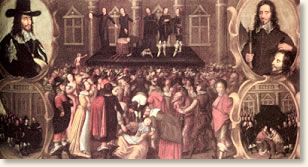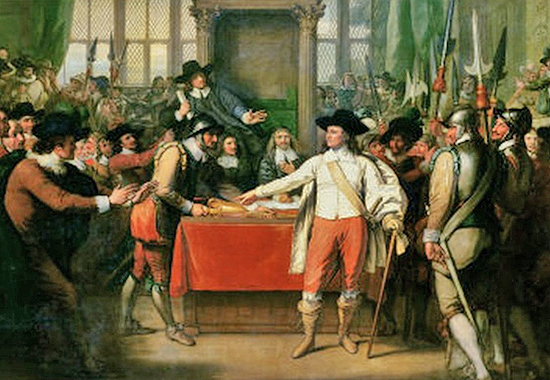English Civil War
Significant Cause
The most significant cause responsible for the English Civil War was Charles not ruling according to the law. Charles took commoners land and took money from Parliament which were both illegal to do as king. When questioned, Nobles said that King Charles is the law which was wrong. Charles also used the Court of Star Chamber to put his enemies on trial.

Significant Components of the Civil War
The New Model Army was a significant component of the civil war. Cromwell reestablished the New Model Army to succeed more than the kings army. The New Model Army was supposed to transform the civil war.
The Battle of Naseby was the most significant component of the civil war. Before, parliament and the Royalists didn’t know which one was stronger, but after the Battle of Naseby , The Royalists were defeated and Charles I was at defeat with a huge portion of his army wiped out. The Battle of Naseby was the Climax of the Civil War.

The Battle of Preston was a significant component of the civil war. With Charles I defeated, he had no chance of over throwing parliament, and if he ever tried to escape again if he were captured again, he would face treason.

Significant Consequence
The execution of Charles was the most significant consequence. The Execution was the turning point of the Civil War because with Charles dead, they ended the Civil War. Immediately after the execution, it was the first time England did not have a monarch and England was panicking. Eventually Cromwell was made Lord Protector following this.

Cromwell and the Republic
Significant Components
Cromwell Dismissing Parliament was a significant component because he dismissed Rump Parliament. Rump Parliament was corrupted and no longer representative .

The Blue Laws being imposed was a significant component. The Blue Laws prohibited Horse races, cockfighting, wrestling, and bear baiting. Also, they closed theaters, disapproved of music and art, closed shops on Sundays, and declared Wednesday a day of fasting. All of these things were unnecessary and only a small amount of people liked these laws. This made Cromwell unpopular and without the Blue Laws, he could have been more popular.

Charles II and the Restoration of the Monarchy
Significant Component
Parliament passing the Test Act was the most significant component of the Restoration of the Monarchy.When Parliament passed the Test Act in 1678, it prevented Catholics from being Members of Parliament, which prevented Charles II and James II from ruling, but at the time, Parliament did not know of Charles’ conversion to Catholicism.
James II and the Glorious Revolution
Significant Component
The most significant component was James violating the test act. Even before James officially violated the Test Act, he had already done so, just by being a Catholic King. James II ruled by the Divine Right of Kings, which is considered unlawful, and is another example of how James Violated the Test Act, as the Divine Right is the complete against the Test Act’s purpose.

